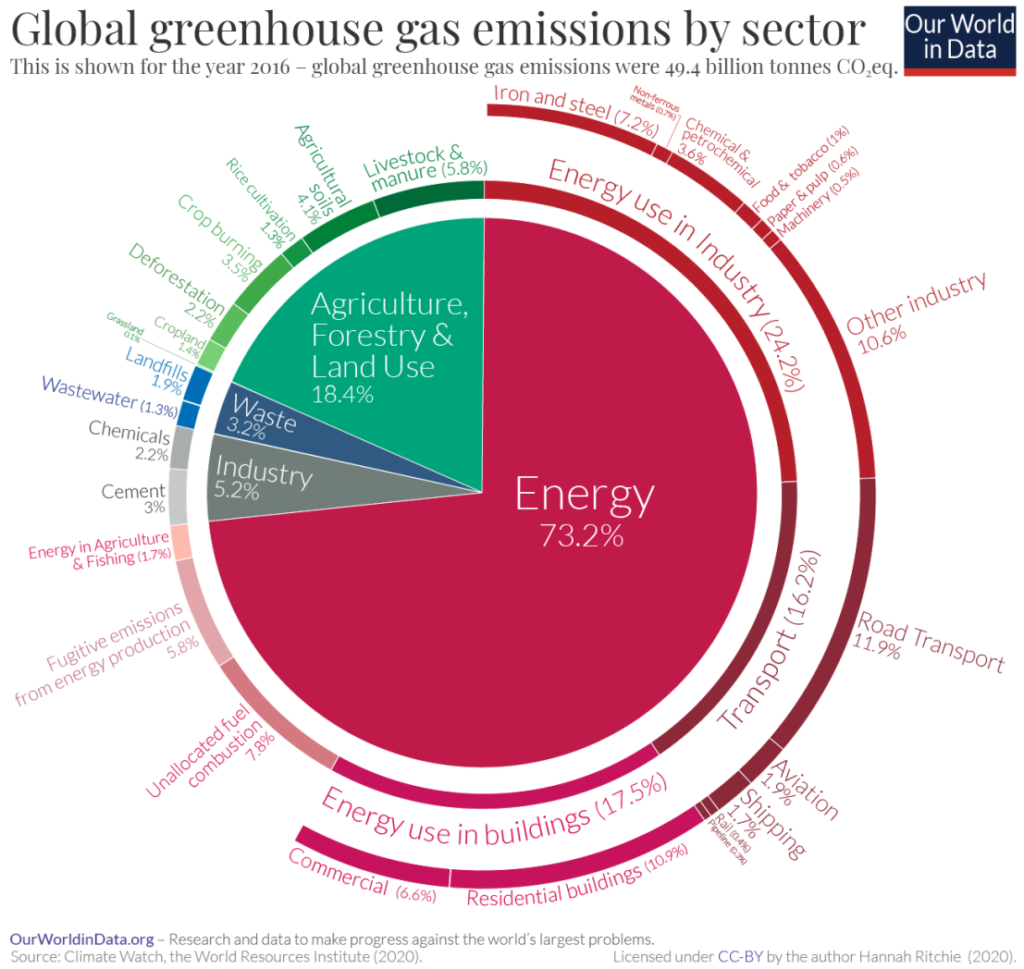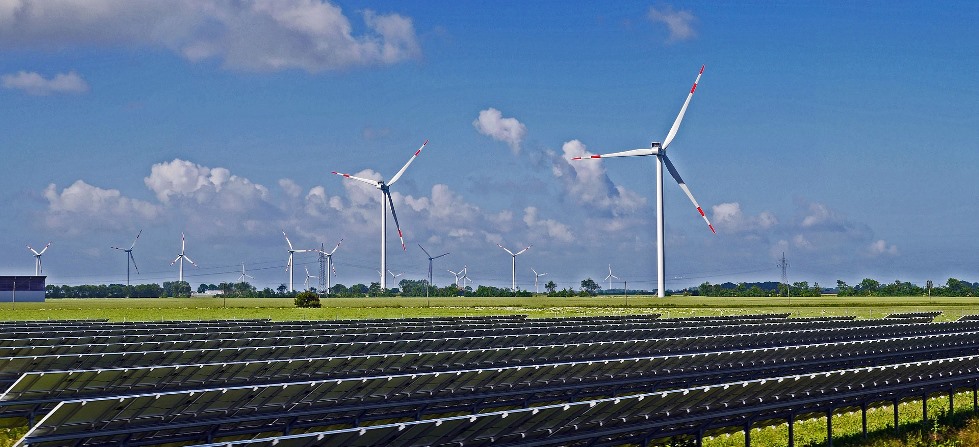How is a Carbon Footprint Calculated–and What do we do With it?
The term carbon footprint is tossed around a lot. It may give you a feeling of responsibility to know what yours is.
But just how is it calculated? And what can you do with the information?
A carbon footprint is a measure of all the greenhouse gases generated in the production of, use or consumption of, and disposal of an item or the enactment of a service. The resulting number is expressed in metric tons. (For us Americans, 1 metric ton = 1.102 US tons.)
Greenhouse gases are emitted in just about everything we do. For example, the production of a gallon of milk involves the feeding and care of the cows, the processing, the milk’s packaging and its carbon production, its travel to the store, its travel to the consumer’s home, refrigeration in all the steps in its journey, and the disposal of the empty package, and whether it’s recycled or landfilled. These are all factored into the carbon footprint of the gallon of milk.
Obviously, each component in this process is extremely small, but it adds up. It varies from place to place and depends on the energy sources used. So averages and assumptions are used and added up to reflect a typical product use or lifestyle. Here’s more on how the numbers are determined at carbonfootprint.com. And from the US Environmental Protection Agency is a more technical, but thorough, read on assumptions and references for them for their carbon footprint calculator.
How you can use your footprint
When you have your score you’ll have a better idea of where your lifestyle is contributing too much to climate change. And that can help you make decisions on where you can reduce your footprint.
You will also see how your lifestyle compares with the rest of the world’s. Currently, the US average footprint is at 16 tons per person. The global average is at 4 tons per person. And you can see how it compares with the target level for all people of 2 tons per person. This is to achieve the goal of a maximum 2 degree Celsius global heating to prevent catastrophic changes and heating to the earth.
Remember that greenhouse gases are made of not only carbon dioxide, but also methane, nitrous oxide, and some others. Methane and nitrous oxide can be much more potent greenhouse gases but their lifetime in the atmosphere is much shorter than carbon dioxide. Since excess carbon dioxide, or “carbon”, stays in the atmosphere for hundreds to thousands of years, carbon is what we measure. The other gases are lumped into the carbon footprint in the form of greenhouse gas equivalents, written as GHGeq or CO2eq for carbon dioxide equivalents. (Read more on the topic here.)
Here are three carbon footprint calculators that are easy to use
There are many calculators to choose from. You need to have some information on hand to fill in the calculator. You’ll usually need to have a sampling of your utility bills, you may need to know the fuel source of your electricity and heating fuel, know how many miles you typically drive in a year, etc.
From the US EPA is https://www3.epa.gov/carbon-footprint-calculator/.
From The Nature Conservancy is https://www.nature.org/en-us/get-involved/how-to-help/carbon-footprint-calculator/.
And from Carbon Footprint, a British-based company that helps individuals and businesses calculate their carbon footprint and helps them reduce it with conservation measures and with carbon offsetting projects like tree planting, is two calculators. One for households and individuals is here: https://www.carbonfootprint.com/calculator.aspx. When you’re there you may also choose the calculator for businesses. And remember that this is where there’s a lot of info on the assumptions that are made for calculations, in the FAQ’s.
But there’s a bigger picture to keep in mind
We live in a society the runs on fossil fuels. When you look at this pie graph it’s easy to see what the largest contributor of carbon is. Nearly 75% of carbon emissions come from the energy sector. And a whopping 84% of the world’s energy comes from fossil fuels.

Not that I think that everything we do is not worth considering. I do think we each need to minimize our carbon footprint. (Remember the 2 tons per person?)
But the elephant in our living room is that 84% of carbon emissions from the energy sector is from fossil fuels.
To make matters worse, fossil fuels are heavily subsidized. In 2020 the governments of 5 countries, US included, subsidized the fossil fuel industry with $5.9 trillion in subsidies—that’s about $11 million every minute. This keeps the price of fuels far below their true price. If they were their true price, it’s believed carbon emissions would decline by 30%, which would be a big step to curbing them and reaching climate goals.
The idea behind the carbon footprint
The idea of an “environmental footprint” started with William Rees, professor emeritus of ecology at British Columbia University. In the early 90’s, while writing a paper on how much land it takes to support human populations, his computer crashed. His new computer was smaller and took up less space on his desk. From that he came up with the idea of a “footprint”.
That idea led him to describe how a population of people anywhere affected the planet with the term “ecological footprint’. The term “carbon footprint” arose to describe how our actions contribute to climate change, but here’s who did that.

Big oil redirects our attention
In 2004 British Petroleum, BP, hired and advertising agency to draw attention away from the fossil fuel industry and to focus the responsibility of carbon emissions onto individual consumers. It provided information on how to go on a low-carbon diet and launched a carbon footprint calculator for us consumers to see how we contribute climate change. Meanwhile, BP made no attempt to reduce its own carbon footprint and continued to expand its oil drilling well into the 2020’s.
“This industry has a proven track record of communicating strategically to confuse the public and undermine action, so we should avoid falling into their rhetorical traps.”
~Geoffrey Supran, science historian at Harvard University who investigates the tactics of fossil fuel interests, from The Capture Club
So what do we do with a carbon footprint?
Using a carbon calculator to know how much we contribute to this climate problem and finding ways to reduce it gives us practice in learning to live more lightly on the planet.
Remember that the average US person has a footprint of 16 tons/ year, while the global average is closer to 4 tons, and the recommendation to avoid catastrophic and irreversible global heating is to drop to below 2 tons/year per person.
“Even a homeless person living in a fossil fuel powered society has an unsustainably high carbon footprint. As long as fossil fuels are the basis for the energy system, you can never have a sustainable carbon footprint. You simply can’t do it.”
~Benjamin Franta, Stanford University, from The Capture Club

We don’t have much time. Remember the pie graph showing the energy sector? That’s what need to change and as fast as possible.
We can use the carbon footprint calculators to help guide our own lives to keep in mind how much we need to reduce our footprints.
But we mustn’t be distracted by them and think we’re doing all we can.
The most important action we need to take is to demand for legislative and structural change toward cheaper, cleaner, more sustainable energy energy with the lowest carbon footprint. The technology already exists. We need to vote in the right people and policies to make the structural changes we need and make those energy sources our infrastructure.
“Say you have a certain amount of time and money with which to make change – call it x, since that is what we mathematicians call things. The trick is to increase that x by multiplication, not addition. The trick is to take that 5 percent of people who really care and make them count for far more than 5 percent. And the trick to that is democracy.” ~Bill McKibben, 2008
That is, private individual actions don’t increase at a rate sufficient to affect the problem in a timely fashion; collective action seeking changes in policy and law can. ~The Guardian
So use the calculators because we all need to continue to adjust our lives. But keep the pie graph in mind and work to solve that biggest problem of all.
Related Reading:
Just what is carbon dioxide and how does it cause climate change?
Global Warming or Climate Change–Which is the Better Term?
Two Powerful Ways Soil Soaks Up Carbon Dioxide
Main References:
https://css.umich.edu/factsheets/carbon-footprint-factsheet
https://www.nature.org/en-us/get-involved/how-to-help/carbon-footprint-calculator/
www.nature.org/greenliving/carboncalculator/
www3.epa.gov/carbon-footprint-calculator/
https://www.carbonfootprint.com/calculator.aspx
https://ourworldindata.org/co2/country/united-states
https://clear.ucdavis.edu/blog/big-oil-distracts-their-carbon-footprint-tricking-you-focus-yours
https://e360.yale.edu/digest/fossil-fuels-received-5-9-trillion-in-subsidies-in-2020-report-finds
https://mashable.com/feature/carbon-footprint-pr-campaign-sham
https://grist.org/energy/footprint-fantasy/
https://grist.org/climate/could-fomo-and-peer-pressure-help-save-us-all/https://en.wikipedia.org/wiki/Carbon_footprint

